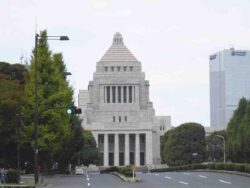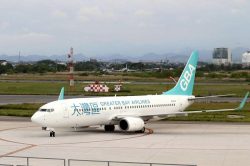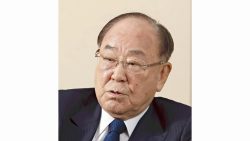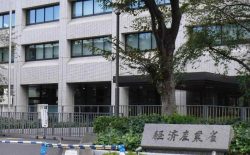295 Candidates Vying for 127 Tokyo Assembly Seats; Many Eyes on Whether LDP Can Remain Biggest Group (UPDATE1)

Voters listen as a candidate gives a street speech in Suginami Ward, Tokyo, on Friday.
19:04 JST, June 13, 2025
Official campaigning kicked off Friday for the June 22 Tokyo Metropolitan Assembly election, with much attention being paid to whether the Liberal Democratic Party can remain the assembly’s largest force.
By the deadline on the day, 295 candidates had filed their candidacies for the 127 seats being contested, the most people running since the number of seats was set at 127 in 1997.
Much attention is being paid to whether the LDP will be able to maintain its position as the largest party in the assembly, as it is facing headwinds over issues of politics and money. The results will likely influence this summer’s House of Councillors election.
Whether the LDP, the Tokyo-based regional party Tomin First no Kai (Tokyoites first group) and Komeito, all of which support Tokyo Gov. Yuriko Koike, will be able to maintain their joint majority is drawing attention.
Another focus in the election will be whether the Democratic Party for the People and the Path to Rebirth, a regional political party led by Shinji Ishimaru, a former mayor of Akitakata, Hiroshima Prefecture, will each gain their first seat.
Key issues in the race include economic concerns such as high prices and wage hikes, as well as the evaluation of Koike’s running of her administration. Political reform will also be a focal point after some LDP members in a party group in the assembly were found to have failed to record required information in their political funds reports.
Prime Minister Shigeru Ishiba, who is also president of the LDP, forwent giving a street speech on the first day of official campaigning.
Shinji Inoue, chairperson of the Tokyo federation of LDP branches, spoke to the public in Shibuya Ward on behalf of the party leader, saying: “We deeply regret and will fulfill our duty to explain the [political funds] matter. The future of Tokyo will be challenging. We must do our utmost to curb rising prices.”
In front of Ikebukuro Station, Koike gave a speech for a candidate endorsed by her party.
“Policy is a lifeline, and Tomin First’s stance is to build the pillar of that policy,” the governor said, citing achievements in child-rearing support, such as effectively free high school tuition.
Yoshihiko Noda, leader of the Constitutional Democratic Party of Japan, was outside JR Nakano Station.
“We will not tolerate wasting taxpayers’ money. I want [our party’s candidates] to act as watchdogs for taxpayers and bark in the Tokyo assembly,” he said. “We will work with politics at the national level to propose concrete policies focused on the lives of Tokyo residents and see them implemented.”
Candidate registration began at 8:30 a.m. at the Election Administration Commission in all 42 electoral districts.
The numbers of seats held before the start of the official election campaign period were as follows: LDP 30; Tomin First no Kai 26; Komeito 23; Japanese Communist Party 19; CDPJ 12; Japan Innovation Party 1; Seikatsusha Network 1, and unaffiliated 11. There were four vacancies.
The LDP has decided not to endorse six members who have served as secretary general of the party’s political organization in the Tokyo assembly for having failed to include required information in their political funds reports.
In response to the political funds scandal, Komeito has decided to forgo endorsing LDP candidates as it did in the previous race. Tomin First coordinated its candidates with the DPFP in some electoral districts. The JCP and the CDPJ, which oppose Koike’s administration, also coordinated their candidates for the election.
According to the commission, there were 11,551,505 eligible voters in Tokyo as of Thursday.
"Politics" POPULAR ARTICLE
-

Japan to Offer U.S. Proposals for Cooperation on Rare Earths, Semiconductors; Potential Measures Could Help Counter China, Correct Trade Deficit
-

Japan Govt to Create Guidelines for Data Leak Prevention at Research Institutes; AI R&D, Risk Management to Be Balanced
-

Eto Dismissed as Japan’s Agricultural Minister; Chosen Successor Koizumi Vows to Tackle High Rice Prices (UPDATE 2)
-

Japan Coast Guard Begins Employment Scheme for Retiring MSDF Personnel; Aims for 15 Recruits in FY25
-
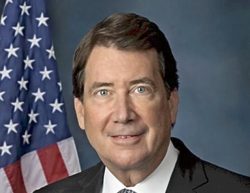
U.S. Senator and Ex-Ambassador to Japan William Hagerty: Economic Security, National Security Are Tied
JN ACCESS RANKING
-
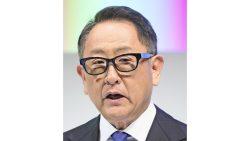
Toyoda to Become Automobile Business Association of Japan Chairman; to Help Guide U.S. Tariff-Affected Industriessns
-

Visitors to Japan Hit Single-Month Record High in April
-

Japanese Researchers Develop ‘Transparent Paper’ as Alternative to Plastics; New Material Is Biodegradable, Can Be Produced with Low Carbon Emissions
-

Japan’s Core Inflation Hits More than 2-year High, Could Force Year-End BOJ Hike
-

Tokyo Experiences Temperatures Exceeding 30 C for 1st Time This Year; Other Parts of Japan also See Soaring Temperatures



